
Have you ever wondered – what will the world look like in 100 years? All of us reading this text will not be alive, nonetheless, the question remains somewhere in the back of our heads. While we are all mortal, we always think about the future. And especially the future that is kind of unreachable for us, but reachable for our children or grandchildren.
One thing is certain – advancements in technology, employment challenges, gene modifications and the growing concern for the environment will be the main topics in the next 100 years.
Virtual reality and artificial intelligence will become increasingly prevalent, changing the way people interact with each other and the world around them. However, this may also result in people becoming more isolated and disconnected from each other.
People will be able to modify their genes either before birth or during their lifetime. This will eliminate many diseases but it will also (probably) create unfair advantages for many people.
And so, if we compare the world of today to that of 100 years ago, it is evident that there have been significant improvements in the standard of living, healthcare, and education.
However, there are also new challenges that have arisen. In the next 100 years, many new challenges will also likely arise.
Nonetheless, every century brought significant advancements, and overall people are living better than they did 100 years ago.
On the other hand, one could argue that this advancement is slowing down. Not from the perspective of technological progress as this is still happening at an unbelievable rate.
But from the perspective of overall life satisfaction, it seems we’re going in the wrong direction.
Many would agree that lifestyle has been deteriorating in the last 5 years.
Will this continue in the future? Will we completely lose our normal lifestyle? Will we lose privacy completely and become part of some kind of technological dystopia?
Let’s see.
In this article we will cover almost all segments of our lives and our world in the next 100 years.
Interesting clue: In 100 years, there might be a 70% chance of renewable energy sources dominating the energy landscape, while advancements in biotechnology and artificial intelligence could have a 80% chance of significantly impacting human longevity and societal structures
Global Demographics

Population Growth
The world’s population is projected to reach 9.7 billion by 2050 and 10.43 billion by 2100. This growth is expected to be unevenly distributed, with the majority of growth occurring in sub-Saharan Africa and South Asia.
While fertility rates are declining in many parts of the world, they remain high in these regions, leading to a younger and more rapidly growing population.
However, we need to note that the peak is expected to happen around the mid 2080s. That means that the population 100 years from now will be around 10 billion.
Interesting fact: It is projected that Nigeria will become 3rd largest country by population in the world.
Urbanization Trends
The trend of people moving from rural areas to cities is expected to continue over the next century, with the world’s urban population projected to reach 68% by 2050. In the next 100 years, this could go as far as 75%.
This trend will be particularly pronounced in developing countries, where cities are growing at an unprecedented rate. Rapid urbanization is leading to a number of challenges, including increased demand for resources and infrastructure, as well as environmental degradation.
Interesting fact: Tokyo is currently the world's largest city, with a population of over 37 million people. However, this will change in the future as Mumbai and Delhi will (most likely) become the largest cities in the world.
Technological Advancements

Artificial Intelligence
Artificial Intelligence (AI) has been rapidly evolving and is expected to transform the world in the next 100 years. AI has the potential to revolutionize industries such as healthcare, transportation, and manufacturing.
In the future, AI will be able to learn and adapt to new situations at a faster rate than humans. This will lead to the development of more advanced and sophisticated AI systems.
By the year 2124 (100 years from now), we can be certain that Artificial General Intelligence (AGI) will be available everywhere. Given that AGI could possess almost unimaginable strength and possibilities, we could conclude that it will have a more significant impact on society than the discovery of electricity.
We can only hope that this impact will be largely positive.
Virtual Reality
Virtual Reality (VR) technology has already made significant steps in the entertainment industry. However, in the future, VR will be used in various fields such as education, healthcare, and military training. VR technology will provide a more immersive experience for users, allowing them to interact with virtual environments as if they were real.
However, virtual reality will also create big challenges in society. We’re already seeing people walking around weirdly with Apple Vision Pro glasses on their heads.
More and more people will do so, and more and more people will lose connection with the reality in one way or another.
People Losing Connection With Real World
The rise of social media and virtual communication has already led to a decrease in face-to-face interactions. In the future, people will even rely more on technology for their daily needs, leading to a further disconnect from reality.
This will impact love life and population projections also. We’re already witnessing a decline in love relationships between males and females. For example, approximately 60% of young men in the USA are single. This negative trend will continue.
With advancements in virtual reality, people will likely spend more and more time in virtual environments.
Heck, probably there will be around 20% of people who will never leave their homes. They will be constantly connected to their devices and they will live their lives in the virtual world.
Brains Wired to Computers
The idea of connecting the human brain to computers may sound like science fiction, but it is becoming a reality already. Brain-computer interfaces (BCIs) are being developed to allow people to control machines with their minds. In the future, BCIs will be used to treat neurological disorders and enhance human abilities.
Now, the potential problem lies in the latter – increasing human abilities. A hundred years from now, BCIs could be rather advanced, enabling some people to become almost superhumans.
Imagine a scenario where an individual with an ultra-advanced BCI possesses the capability to learn everything there is about physics in a matter of days or even hours.
Not to mention how BCIs could also significantly enhance the physical capabilities of people. This will almost certainly create unfair disadvantages that wealthy individuals will have.
Interesting fact: In January 2024, Elon Musk's Neuralink was implanted in the first human patient.
Quantum Computing
Quantum computing has the potential to solve complex problems that traditional computers cannot. In the future, quantum computers will be used to develop more advanced AI systems, create more efficient energy sources, and improve cybersecurity.
It is expected that quantum computing will be mainstream in the next 100 years and this will change the game for everything.
Namely, if we take a look at the table comparing standard computing versus quantum computing, we can easily conclude how this next era of computing will be revolutionary.
Basically, standard computers compared to quantum computers will look something like the basic calculator we had in the 80s versus today’s smartphones.
| Aspect | Quantum Computing | Standard Computing |
| Basic Unit of Data | Qubit (Quantum Bit), can exist in superposition | Bit (Binary Digit), represents 0 or 1 |
| Information Encoding | Encoded using quantum states (superposition, entanglement) | Encoded using binary states (0 or 1) |
| Processing Method | Utilizes quantum phenomena (superposition, entanglement) to perform operations | Follows classical logical operations |
| Speed Comparison | Quantum computers have the potential to be exponentially faster than classical computers for certain problems, potentially achieving speed-ups of hundreds or even thousands of times. | Classical computers operate at speeds limited by the speed of electrons and logical operations, typically achieving linear improvements with hardware advancements. |
| Memory | Quantum states are fragile, susceptible to decoherence, requiring error correction techniques | Memory is stable and can retain information reliably over time |
| Parallelism | Allows for parallel processing of multiple states simultaneously due to superposition | Limited to parallel processing with multiple cores or distributed systems |
| Algorithms | Unique quantum algorithms designed to leverage quantum properties for specific tasks | Algorithms based on classical logic and mathematical operations |
| Programming Model | Requires specialized programming languages and frameworks (e.g., Qiskit, Cirq) | Utilizes conventional programming languages (e.g., Python, C++) |
| Current Development | Still in the early stages of development, with ongoing research and experimentation | Well-established technology with continuous advancements and optimizations |
| Practical Applications | Quantum cryptography, optimization problems, drug discovery, and materials science | General-purpose computing, software development, data analysis, etc. |
New Findings in Physics

In the past century, physics has made significant steps in understanding the fundamental laws of the universe. However, in the next 100 years, the field is expected to undergo even more revolutionary changes.
As mentioned, one of the most exciting areas of research is quantum computing. Scientists are exploring the potential of using quantum mechanics to build computers that can solve problems exponentially faster than classical computers.
Another area of interest is the study of dark matter and dark energy. While these substances make up the vast majority of the universe, little is known about them. Researchers are using advanced telescopes and particle detectors to try to understand the nature of these mysterious substances.
Additionally in the next 100 years, we are almost certain that we will achieve fusion power. If so, this will change society forever. For the better.
Namely, fusion power, like the sun, can create energy by joining atoms together. It doesn’t produce pollution like burning coal or oil. Fusion uses hydrogen found in water and a little bit of lithium, which is abundant. If we can make fusion power work, it could provide us with clean and almost limitless energy for the future.
Finally, there is the possibility of discovering new particles beyond the Standard Model of particle physics. The Large Hadron Collider, the world’s largest and most powerful particle accelerator, is currently being upgraded to increase its energy and allow for the discovery of new particles.
Different Jobs in 100 Years?
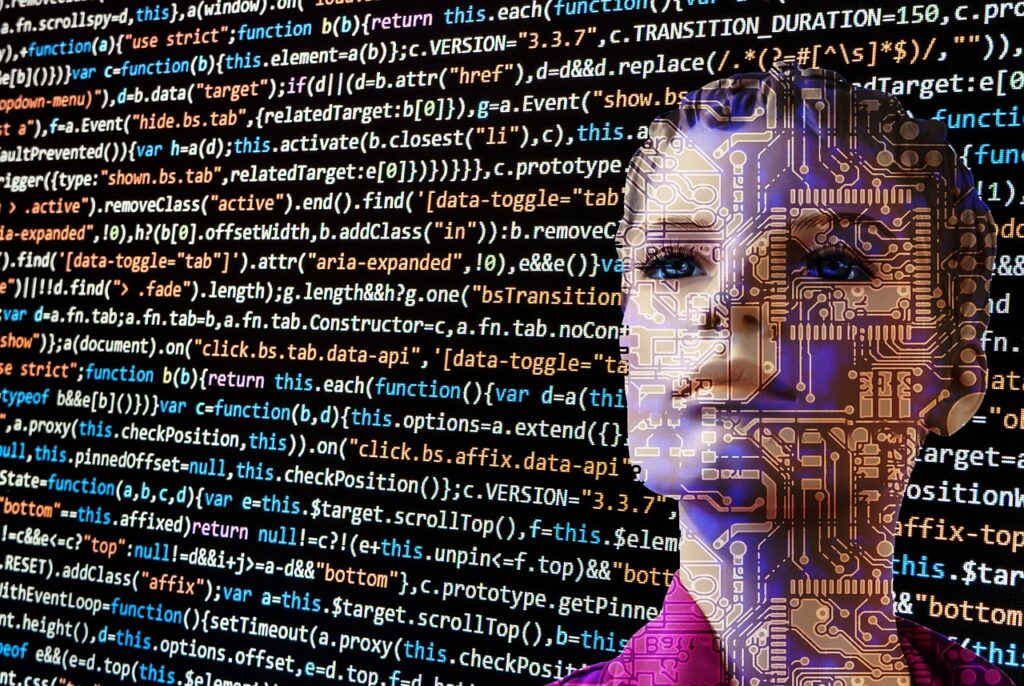
As technology continues to advance, the job market will also change to adapt to these new developments. There will be new jobs created that don’t even exist yet, and some current jobs will become obsolete.
Here are just a few examples of what different jobs might look like in 100 years:
Virtual Reality Experience Designer
As virtual reality technology becomes more advanced, there will be a growing demand for professionals who can design immersive experiences for VR users. These designers will create everything from video games to virtual reality training simulations for various industries.
Climate Change Reversal Specialist
Climate change reversal specialists will work to develop and implement strategies to reduce carbon emissions, restore ecosystems, and mitigate the effects of climate change.
Space Tourism Guide
As space travel becomes more accessible to the general public, there will be a growing demand for professionals who can guide tourists through space travel experiences. Space tourism guides will be responsible for ensuring the safety and comfort of their clients, as well as providing educational and entertaining experiences during their journey.
Journalism, Mass Media, and Social Networks

Journalism as we know it is likely becoming a thing of the past. And rightfully so. Many big media companies are simply too controlled and primarily spread propaganda today.
Of course, there are exceptions that confirm the rule, but they are becoming fewer. Moreover, fewer people trust major media outlets.
Genuine investigative journalism hardly exists anymore within large media and news corporations. The best journalists have decided to forge their own paths and publish news through their independent platforms.
Mainstream news is no longer being watched. Only boomers still watch the news, and in a few decades, they won’t be around anymore.
Young people, or those who are just born, certainly won’t follow mainstream media news.
It’s entirely conceivable that in a hundred years, most major media houses will collapse, and individual journalists and podcasts will replace them.
This is already happening and will continue to happen more and more.
This brings us to the question of social networks. Some forms of social media will undoubtedly be present a hundred years from now.
However, most of today’s platforms will likely fail.
Every 5-10 years, young people start using entirely new models of social media. So, in a hundred years, it will undoubtedly prevail some form of social network that will actually represent the virtual world entirely.
What is most likely is that people will become even more addicted regardless of what model of social media exists in 100 years.
Three Global Languages

In the next 100 years, the world will see a shift in the dominant languages spoken globally. English, Mandarin, and Spanish will become the three global languages. These languages will be the most widely spoken and understood languages in the world.
English has been the dominant language in the global business world for many years. It is the official language of 67 countries and is spoken by over 1.5 billion people worldwide.
Mandarin is spoken by over 1 billion people worldwide. China’s growing economic and political power will ensure that Mandarin becomes increasingly important in the global arena.
Namely, Mandarin Chinese is already the second most used language on the internet, and it is expected to continue to grow in importance and perhaps overtake English very soon.
Spanish is the third most spoken language in the world, with approximately 500 million speakers. It is the official language in 21 countries, including many in Latin America.
Spanish is also the second most commonly studied language in the world after English. In the future, Spanish will continue to grow in importance as Latin America becomes an increasingly significant player in the global economy.
In conclusion, it is likely that in the future, the number of diverse languages will decrease, and perhaps only a few of the most popular ones will prevail.
In the next 100 years, there will probably still be dozens of languages; however, in the more distant future, we can say with good probability that the three aforementioned languages (plus Hindi) will cover 90% of the population.
Food in 100 Years

Synthetic Foods
As the world’s population continues to grow, the demand for food is also increasing. To meet this demand, scientists are searching for new ways to produce food.
One such way is through synthetic foods. These are foods that are created in a lab using various ingredients and techniques.
Synthetic foods have several potential advantages over traditional foods. For one, they can be produced in large quantities and with greater consistency. They can also be tailored to meet specific dietary needs, such as low-fat or low-sugar diets. Additionally, synthetic foods are less likely to be contaminated with harmful bacteria or other pathogens.
Despite these advantages, synthetic foods are not without their downsides. One concern is the potential for long-term health effects. As these foods are relatively new, there is still much research to be done on their safety and nutritional value.
Additionally, lab-grown food could create large problems for all the farmers across the world.
This is one of the reasons why Italy banned lab-grown meat in 2023.
Interesting fact: In 2013, the world's first lab-grown burger was created at a cost of $325,000.
Sports in 100 Years?

Sports have always been an integral part of human society, and in the last century, they have evolved significantly.
With the advancement of technology and the changing socio-economic landscape, it’s difficult to predict what sports will look like in 100 years. However, some trends can be observed that may shape the future of sports.
One of the most significant changes that could occur in the world of sports is the increased use of technology. From wearable devices to virtual reality, technology is already being used to enhance the performance of athletes and provide a more immersive experience for fans.
In the future, it’s likely that we’ll see even more advanced technology being used in sports, such as AI-powered coaches and referees.
Heck, perhaps we will watch robots on TV playing football, running tracks, or any other sports. It is not unlikely that in 100 years we could see whole new disciplines invented just for robots.
Interesting fact: The earliest known Olympic Games, dating back to 760 BC, featured just a single competition: a running race.
Ultra Realistic Games in 100 Years?
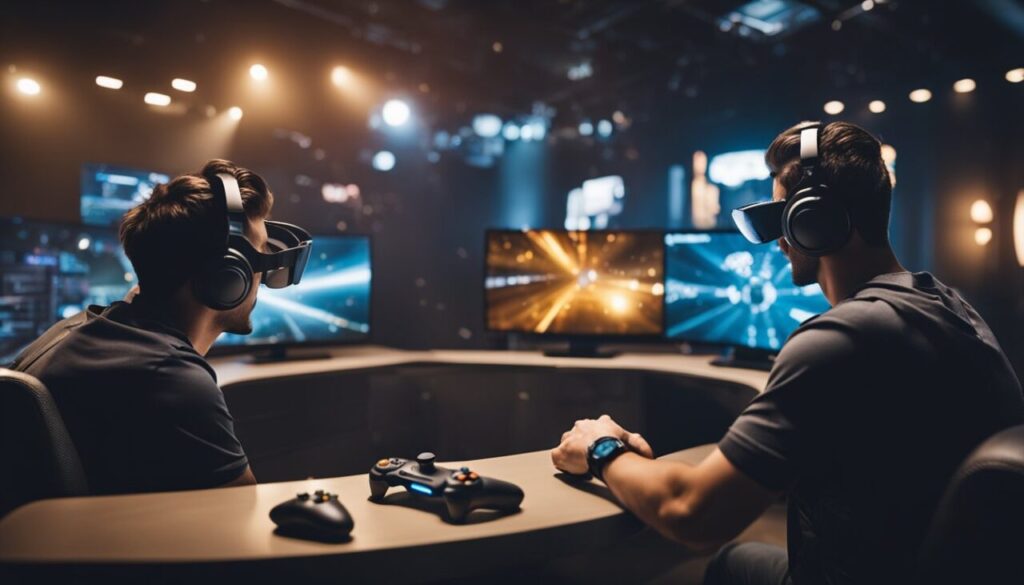
In the last few decades, video games have come a long way, from the pixelated graphics of the 80s to the ultra-realistic graphics we see today.
But what will video games look like in 100 years?
Video games will undoubtedly become even more immersive, with ultra-realistic graphics and physics engines that accurately simulate the real world.
In addition to the visual aspect, games will become much more interactive and responsive to the player’s actions. With advancements in artificial intelligence and machine learning, games will be able to adapt to the player’s behavior and create unique experiences for each individual.
However, there are also concerns about the potential negative effects of such immersive games.
If games become too realistic, players may have difficulty distinguishing between the virtual world and reality, leading to addiction and other psychological issues.
Will all of this lead to an intermediate phase between the matrix and the real world? For now, we cannot know, but it seems that everything is moving in that direction.
Interesting fact: The first video game, "Tennis for Two," was created in 1958 and was played on an oscilloscope.
Environmental Changes

Climate Change Effects
In the next 100 years, the world will probably face significant environmental changes due to climate change. Rising sea levels, more frequent and severe weather events, and changing temperature patterns will impact the way humans live and interact with the environment.
The melting of the polar ice caps will most likely cause sea levels to rise, potentially flooding some coastal cities and displacing millions of people.
The changing temperature patterns will also lead to changes in agriculture and food production, affecting the global food supply.
Interesting fact: The Arctic Ocean is expected to be ice-free in summer by 2040.
Biodiversity
Biodiversity is the variety of life on Earth, including plants, animals, and microorganisms. The loss of biodiversity is a major environmental concern, and it is expected to continue in the next 100 years.
Climate change, habitat destruction, and pollution are some of the factors that contribute to the loss of biodiversity. The extinction of species can have a significant impact on the ecosystem and the services it provides, such as clean water and air.
Intriguing fact: It is estimated that one million species are at risk of extinction in the next few decades.
Resource Management
As the world population continues to grow, the demand for resources such as water, energy, and food will increase. The management of these resources will be crucial in the next 100 years to ensure sustainable development. Climate change will also impact the availability of resources, making it even more important to manage them efficiently.
Renewable energy sources such as solar and wind power will become more important, and water management strategies such as desalination and conservation will be necessary.
Desalination will most certainly become the most adopted solution for water scarcity. However, we’re not there yet.
Namely, desalination is not universally adopted due to several factors. Firstly, desalination requires significant energy input, making it expensive compared to other freshwater sources like rivers or groundwater.
The high energy demand also contributes to environmental concerns, particularly regarding greenhouse gas emissions and habitat disruption. Additionally, desalination plants can have negative impacts on marine ecosystems through the intake and discharge of seawater, affecting marine life and coastal habitats.
Moreover, the salt-water byproduct generated during desalination, containing concentrated salt and other chemicals, poses disposal challenges and environmental risks if not managed properly.
However, by the year 2100 or even earlier, it is expected that people will make desalination much cheaper and widely available.
Statistics: The global demand for water is expected to increase by 55% by 2050.
Socioeconomic Dynamics
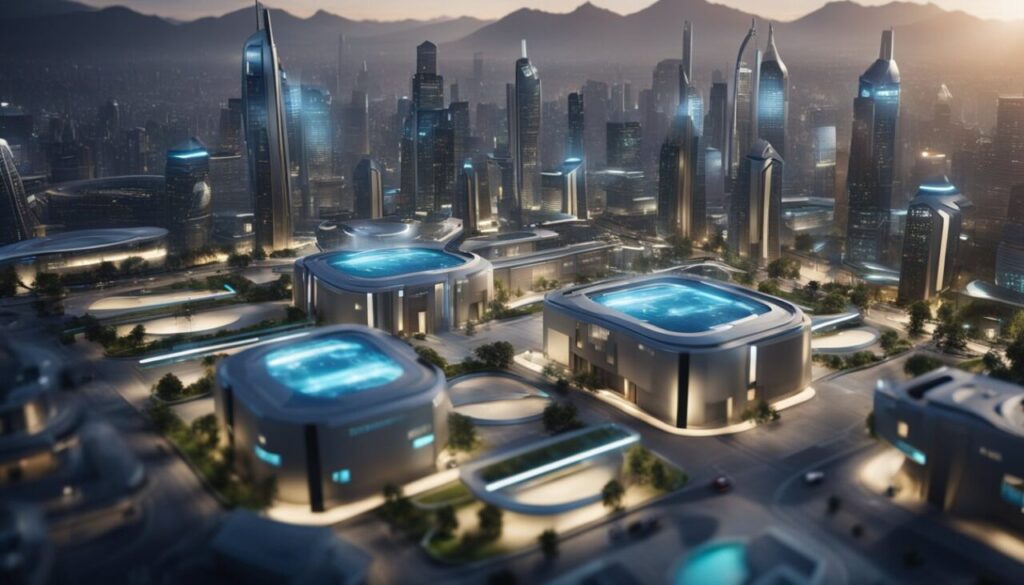
Economic Shifts
In the next 100 years, the world will experience major economic shifts. With the rise of automation and artificial intelligence, many jobs will become obsolete, leading to a huge reduction in the workforce.
However, new jobs will emerge in fields such as robotics, data analysis, and renewable energy. The shift towards a more service-based economy will continue, with an emphasis on personalized experiences.
Interesting fact: By 2050, it is projected that the global middle class will have grown by 3 billion people, with the majority living in Asia.
Global Currency
The world is moving towards a cashless society, with digital currencies becoming more widespread.
In the next 100 years, it is possible that a global currency will emerge, replacing traditional currencies. This global currency will most likely be completely digital and based on blockchain.
What will happen in the next several years will determine the future of the next 100 years. Namely, it is expected that more and more countries will issue their digital coins and currencies.
Then, around 30 years from now, many of these coins will merge, creating several digital currencies around the world. And in 100 years from now, it wouldn’t be surprising if the world had only 1-3 global currencies.
While digital money and global currencies bring some benefits, there are potentially many negative aspects.
For example, China already controls its citizens with a credit score. This kind of approach could become widespread around the world and be implemented rather strictly.
This, in turn, could create a semi-dystopian society where people think they are free, but in reality, they are monitored every second of their lives.
Global Governance
As the world becomes more interconnected, global governance will become a real possibility.
In the next 100 years, there may be a shift towards a more centralized global government, with the United Nations playing a larger role in international affairs.
This could lead to increased cooperation and stability, but it could also lead to issues of sovereignty and control.
As per our prediction, this could happen as early as 2050, but the likelihood of this happening by 2100 or 2124 becomes even higher.
Health and Medicine
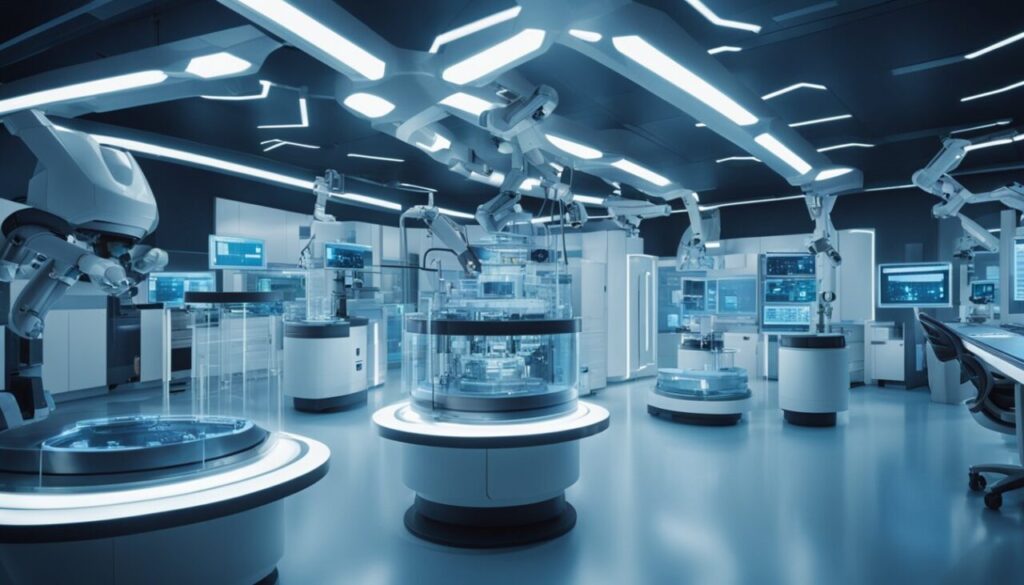
Disease Management
In the next 100 years, disease management will become much more efficient. With the help of artificial intelligence and machine learning, doctors will be able to diagnose and treat diseases more accurately and quickly.
Medical professionals will have access to real-time data, which will enable them to make informed decisions about patient care.
No More Diseases?
While it may seem unbelievable, the possibility of eradicating certain diseases is not out of reach. With the help of gene editing, scientists may be able to eliminate genetic disorders and diseases that are caused by mutations.
Additionally, advancements in nanotechnology may lead to the development of tiny robots that can target and destroy cancer cells.
Interesting fact: In the last century, smallpox was the only disease that has been eradicated globally.
Lifespan of People?
Advancements in medicine, technology, and healthcare will likely lead to an increase in life expectancy. People will have access to personalized medicine, which will enable doctors to tailor treatments to an individual’s genetic makeup.
Additionally, regenerative medicine will become a reality, allowing people to regenerate damaged organs and tissues.
It would not be any surprise that people born today will on average live to be 100 or more.
Healthcare Accessibility & 3D Printing
In the next 100 years, healthcare will become more accessible to people around the world. Telemedicine will enable doctors to diagnose and treat patients remotely, eliminating the need for people to travel long distances to see a doctor.
Additionally, advancements in 3D printing will lead to the development of affordable medical equipment and prosthetics.
Education and Knowledge Distribution
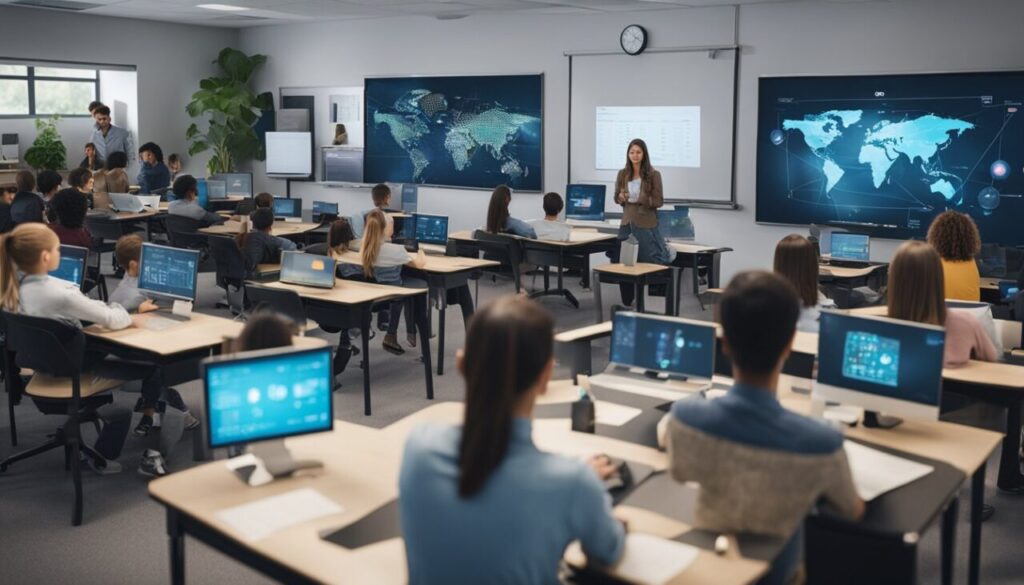
In the next century, the way people learn will be completely changed. Traditional classroom settings will be replaced by virtual and augmented reality learning environments, enabling students to learn from anywhere in the world.
These immersive technologies will allow students to experience simulations of real-life scenarios, making learning more engaging and interactive.
Furthermore, personalized learning will become more prevalent, with adaptive learning algorithms tailoring education to individual needs.
Besides that, with the implementation of brain-computer interfaces, it is likely that people will have the ability to learn much faster.
Remember when Neo from the movie Matrix managed to learn all martial arts skills in one afternoon? Well, perhaps not to that extent, but certainly people will be able to learn much, much faster
Infrastructure and Urban Development
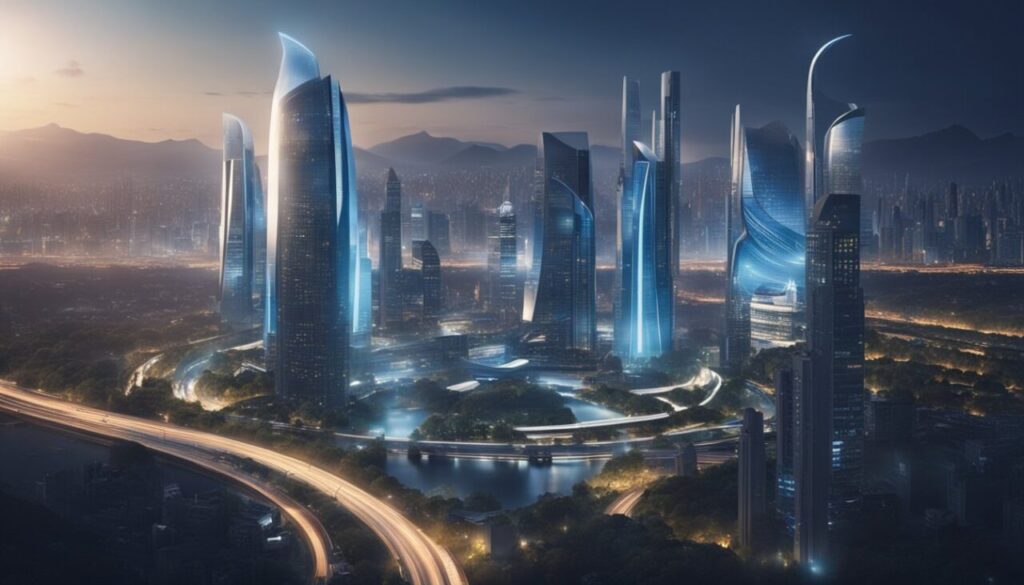
Smart Cities
In the next 100 years, cities will become smarter and more connected than ever before. Smart cities will use advanced technology to improve the quality of life for their citizens.
They will have integrated systems that will enable them to monitor and manage everything from traffic flow to energy consumption. This will help to reduce waste, increase efficiency, and improve sustainability.
One example of a smart city is Singapore. They have implemented a range of initiatives, including a smart transportation system, a smart energy grid, and a smart water management system. These initiatives have helped to reduce traffic congestion, improve energy efficiency, and conserve water resources.
Underwater Cities
With rising sea levels and the threat of climate change, underwater cities may become a necessity in the future.
These cities will be built underwater and will be self-sufficient, with their own energy, food, and water systems. They will also be designed to withstand extreme weather conditions and natural disasters.
One example of an underwater city is the Ocean Spiral project in Japan. This project aims to create a self-sufficient underwater city that can house up to 5,000 people.
Transportation Evolution
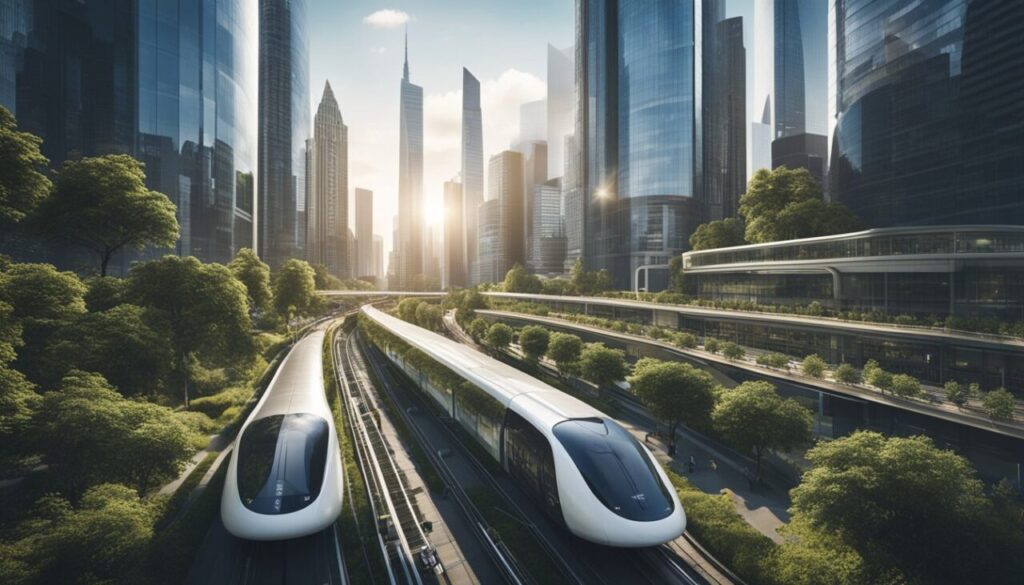
Transportation will undergo a major evolution in the next 100 years. Electric and autonomous vehicles will become the norm, and there will be a shift towards more sustainable modes of transportation.
Hyperloop technology will also become more widespread, enabling people to travel at incredible speeds.
Will we have flying cars?
Probably not.
Flying cars, probably won’t happen in the next 100 years. They face big problems like safety and how to manage all those cars flying around without crashing into each other.
Plus, it’s not just about building them – governments would need to agree on rules for flying cars, and people would need to feel safe using them.
While we might see some cool prototypes or experiments, it’s unlikely flying cars will be a normal part of our lives anytime soon. Sure, some rich people will probably own them and will be allowed to travel like that, but for the majority of people, this will still be pure science fiction.
Interesting fact: There are 1.475 billion cars in the world in 2024.
Sustainable Living
Sustainable living will become a big focus in the next 100 years. Cities will be designed to be more eco-friendly, with green spaces, renewable energy sources, and sustainable transportation systems.
There will also be a shift towards more sustainable food production, with vertical farming and hydroponics becoming more widespread.
One example of a city that is leading the way in sustainable living is Copenhagen. They have implemented a range of initiatives, including a bike-sharing scheme, wind turbines, and green roofs.
There are many smart cities already in plans or some in construction:
- The Line (Saudi Arabia): Saudi Arabia has revealed plans for The Line, a 170-kilometer-long, 500-meter-tall city within the Neom mega-project. Despite its massive size and expected population of nine million, The Line will only be 200 meters wide. Its goal is to connect its two ends in just 20 minutes with an efficient transport system. The design focuses on nature preservation and improving human livability, offering an alternative to traditional circular urban layouts. The ambitious Line project is expected to be completed by 2030.
- Telosa (USA): Danish architect Bjarke Ingels and his studio BIG are planning Telosa, a city for five million people, to be built from scratch in the US desert. The visionary behind Telosa is billionaire entrepreneur Marc Lore, who aims to make it “the most sustainable city in the world.” The city’s land will be owned by a community endowment, prioritizing resident welfare. While no specific completion date has been announced, the visionary behind Telosa, Marc Lore, aims to have the first residents move in within the next 10 years.
- BiodiverCity (Malaysia): BiodiverCity, also designed by BIG, is a 1,821-hectare development consisting of three artificial islands off the coast of Malaysia’s Penang Island. Each island, resembling lily pads, is expected to house 15,000 to 18,000 residents and will be linked by an autonomous transport network. The buildings will mainly use bamboo, timber, and recycled materials, with ecological buffers supporting biodiversity. The completion timeline for BiodiverCity has not been officially disclosed, but it is part of Malaysia’s Penang South Islands development, which is expected to be completed by 2030.
- New Administrative Capital (Egypt): Egypt is building a new capital city to ease congestion in rapidly growing Cairo. The New Administrative Capital will span 700 square kilometers and accommodate up to seven million people. Architecture firm SOM has designed the masterplan for this privately funded project, which includes one of the world’s largest urban parks. Construction of the New Administrative Capital is ongoing, with some government offices already operational. The full completion is anticipated by 2025.
- Maldives Floating City (Maldives): The Maldives Floating City is a groundbreaking concept aimed at addressing the challenges of rising sea levels. While still in the conceptual stage, the idea involves creating a self-sustaining floating city adaptable to changing environmental conditions. It presents an exciting vision for a future where cities coexist harmoniously with nature. As a rather innovative concept, the timeline for the Maldives Floating City is still unclear.
Final Thoughts

In the end, if we look through history, each new century has likely been better than the last. With perhaps a few exceptions caused by various deadly diseases.
And so, we hope that the 22nd century will be better than the 21st and 20th, even though the 21st has only just begun.
The 20th century brought an incredible number of inventions. To name just a few: the internet, television, airplanes, nuclear energy, computers, antibiotics – the list goes on and on.
The 21st century is more about advancing things that were discovered in the 20th century, however, we are only at the beginning.
What the 22nd century will bring in terms of new discoveries and inventions at this moment we cannot know, but we do know that there will be much progress in technologies that already exist or are in their infancy, such as genetic engineering, nanotechnology, nuclear fusion, robotics, and of course, the reinvention of everything happening online.
As we have already said, big changes will happen in medicine, education, artificial intelligence, virtual reality, transportation, and many other things.
But much will also change in everyday life.
Jobs in the 22nd century will be completely different. We still cannot know the extent of the impact of artificial general intelligence. Many people will surely lose their jobs, but will that also mean that many new jobs will not be needed because robots and AI will do half the work?
History has shown that this is not the case. Namely, many feared electricity, then cars, and finally the internet.
They feared that civilization would collapse or that people would lose their jobs in large numbers.
But that didn’t happen.
What happened is that people retrained.
However, this time the situation could be different.
It may be that we are now on the verge of the beginning of something grand.
Something that we ourselves truly do not understand.
And that could potentially cost us dearly, literally or figuratively.



























